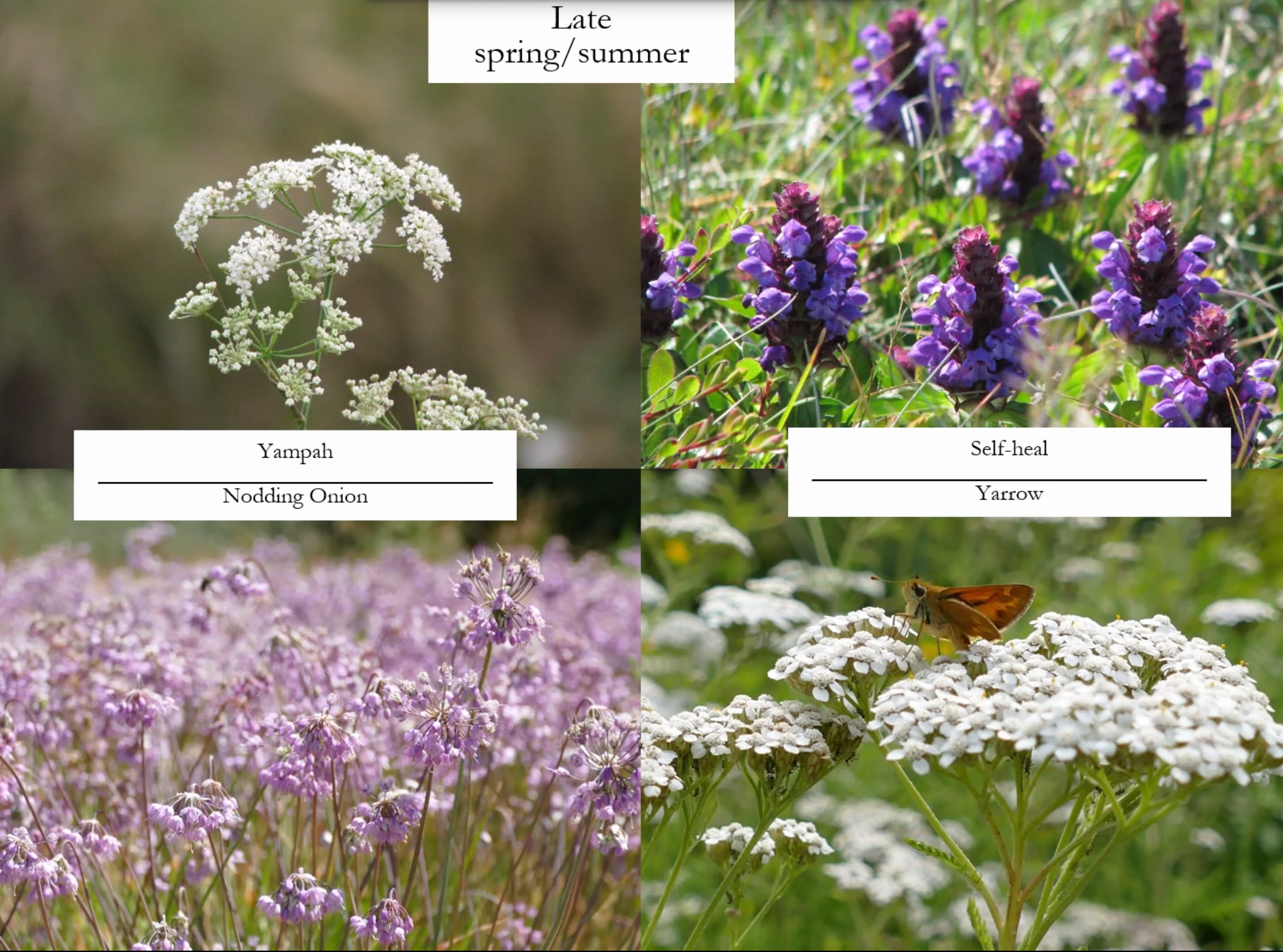Special Topics in Horticulture: Environmental Stewardship
Environmental Stewardship
Student Blog Post by Amanda Blackmore and Alina Hanneson
This week's special topic is on Environmental Stewardship, with a focus on ways we can implement ecologically sustainable practices into our home gardens and surrounding areas. This past Monday, HCP students had the pleasure of talking with Kristen Miskelly from Satinflower nurseries. Kristen and her partner James opened Satinflower Nursereries in 2013 because of a love for native plants and an aspiration to facilitate local restoration work. They provide ethically sourced, genetically local seeds and plants with an aim to inspire and empower people to restore and conserve nature. The nursery specializes in the restoration and ecology of Garry oak ecosystems and meadow scaping.
Here's a few points that stood out to us:
Loss of Habitat
With human populations come development, resulting in destruction of natural ecosystems, 95% of meadows are gone in Victoria (Beacon Hill and Dallas Road park for example). Our Garry oak ecosystems are home to 20% of the plants listed on the species at risk act. With a continued loss of habitat and invasive species competition, our local flora and fauna are struggling. You are an important part of conserving and restoring nature.
Why You Should Consider Using Native Species in Your Garden
Native plants are a wonderful addition to any garden. Not only are you helping your local ecosystem and wildlife habitat, but you are increasing populations of at risk species. By dedicating a space for indigenous plants, you are providing biodiversity, aiding local wildlife, and giving back to the history of the land. They can be placed in more difficult sites non-native plants struggle to thrive in, especially soils with heavy clay. Native seed fields do not need watering, fertilizer, pesticides or herbicides. They are adapted to our wet winters and summer droughts, can be deer resistant and overall are less maintenance. There are plenty of plants to choose from that have wonderful blooms, lovely fragrances and edible/medicinal value. When planning your garden or purchasing a new plant, ask yourself, is there a native alternative that would suit my needs/aesthetics AND serve this environment holistically?
A good practice when growing native plants for gardens and restoration is to collect the seeds and propagate cuttings. Timing is critical, as many native species must experience a winter to germinate. Site prep is an important part of this practice. Luckily, Satinflower Nurseries have guides on how to collect and plant from seed. We recommend avoiding collection or removal of native plants from the wild to avoid pressure on already struggling ecosystems. Unfortunately the 20% rule of harvesting no longer applies to such a drastic loss in habitat. The removal also declines the amount of harvestable material for indigenous communities, who have suffered great resource losses.
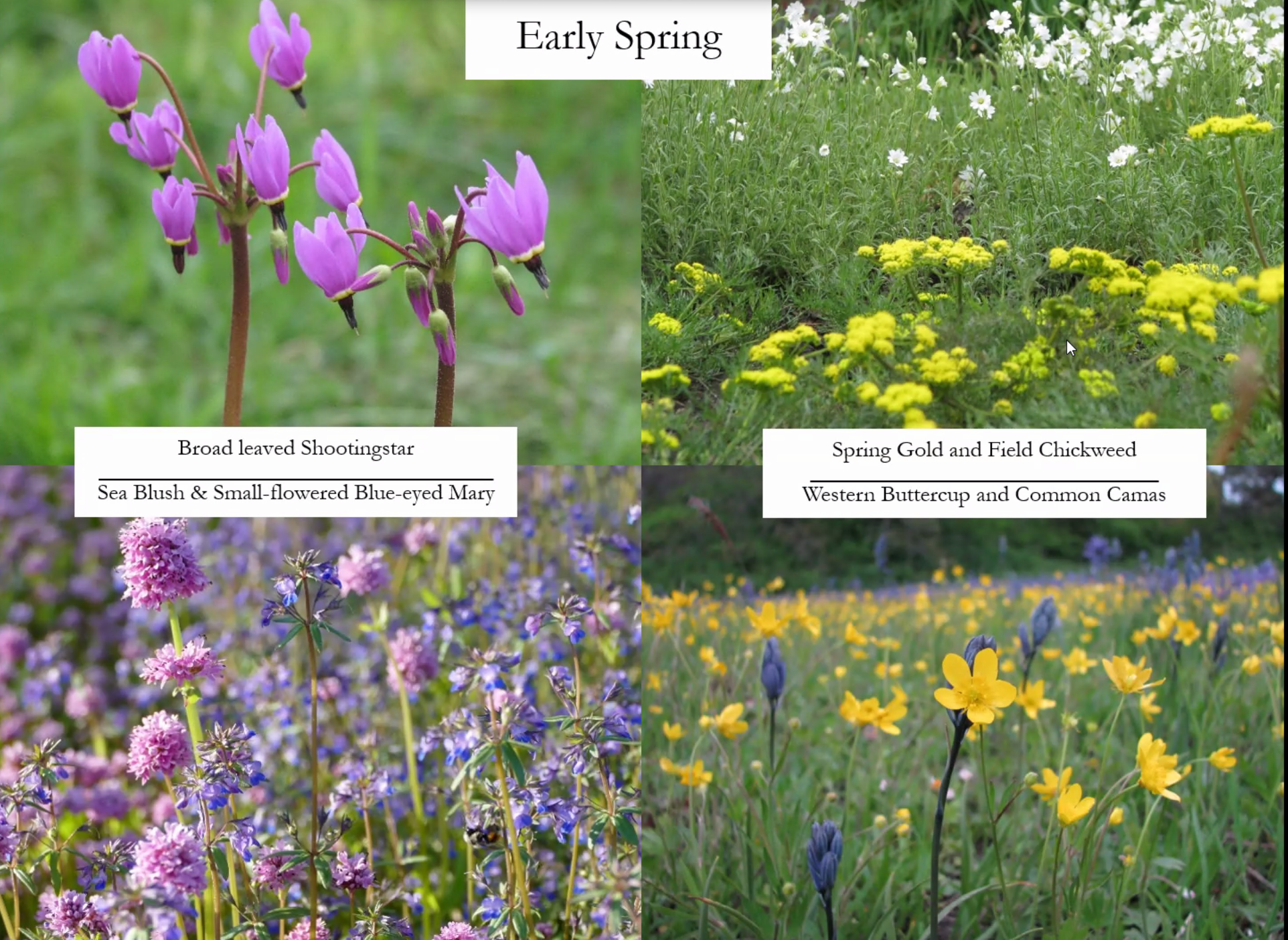
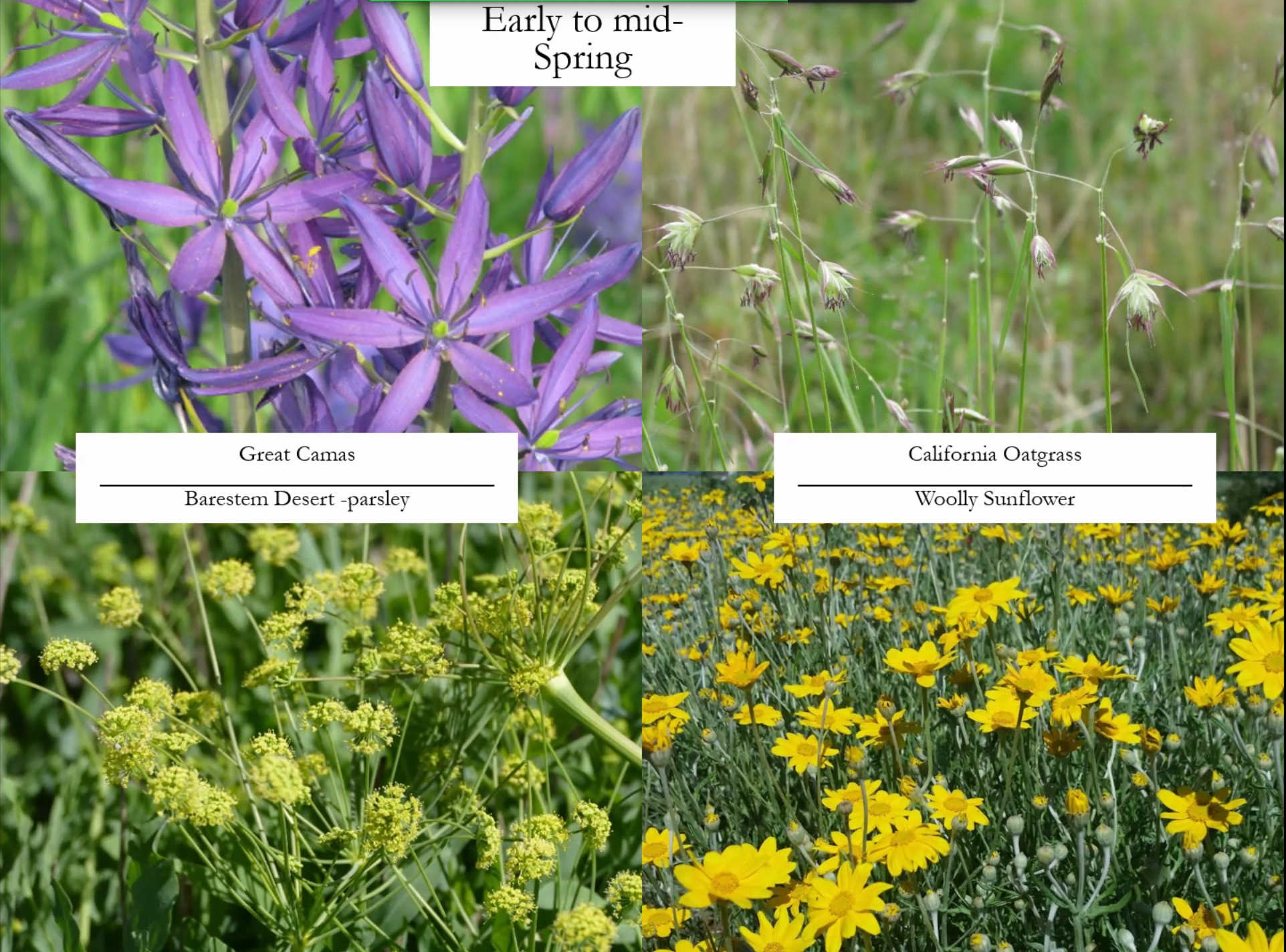
The Importance of Native Plants for our Native Pollinator Friends
Plants and pollinators have a special relationship of mutual benefit, the act of an insect or bird foraging for food from a flower can aid in the fertilization and continuation of a plant's life
cycle. Many plants and animals have evolved simultaneously to develop specialized characteristics that fill specific niches. For example; the long beak of a hummingbird and deep cylindrical flowers or flowers with an accentuated scent in the evening to attract nocturnal pollinators. Because of this coevolution, some of our native pollinators rely exclusively on specific native species for food, breeding habitat and nesting resources.
A few local examples:
● Dodecatheon “shooting stars” need a specific native bee species to pollinate due to their ability to reach a certain buzz frequency to release its pollen.
● A suite of local butterflies rely on stinging nettle for their survival. Milbert's tortoiseshell, Satyr Anglewing and Red Admiral caterpillars ONLY eat stinging nettle. It's also an important plant for the Westcoast lady and painted lady as well.
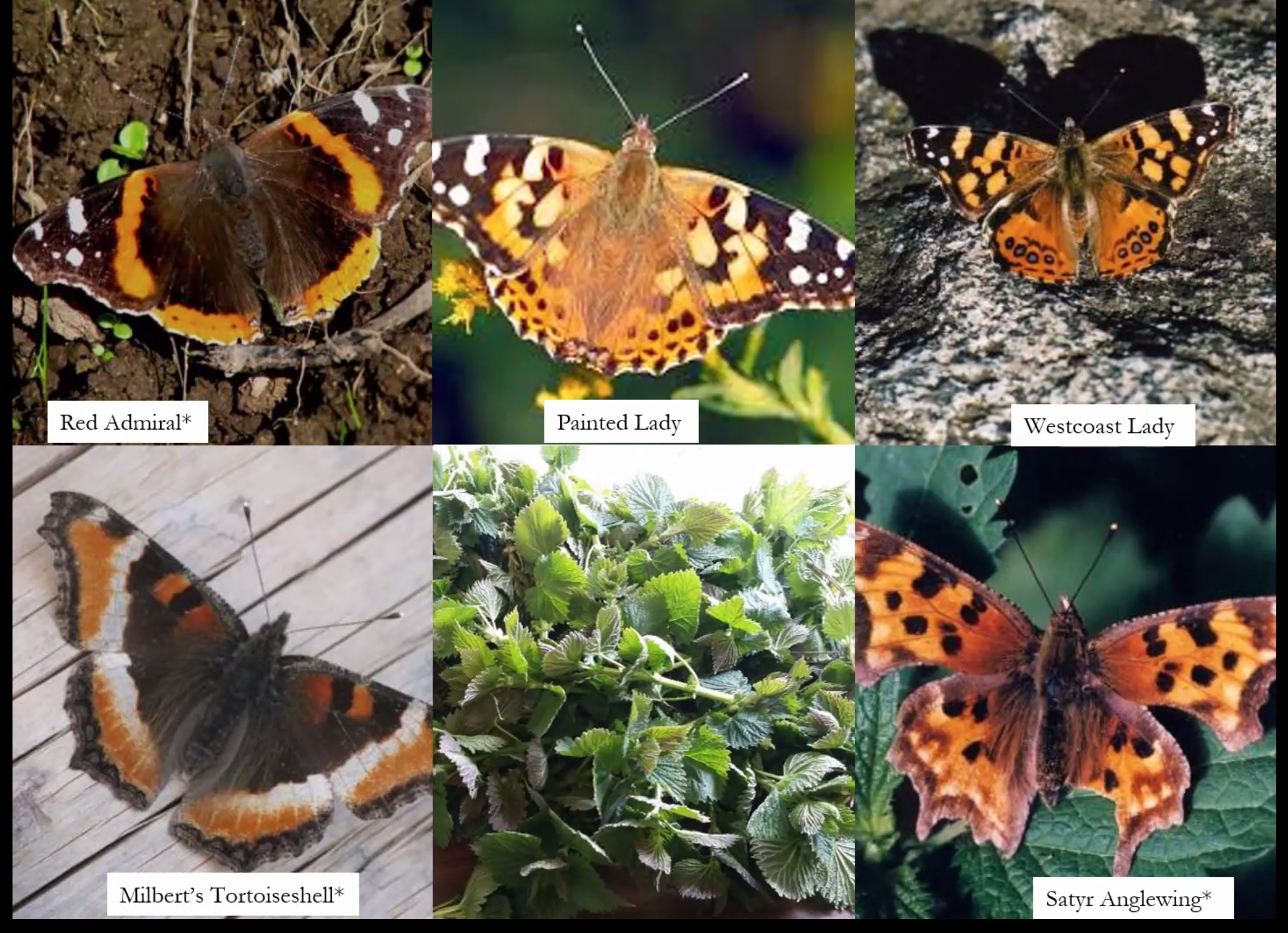
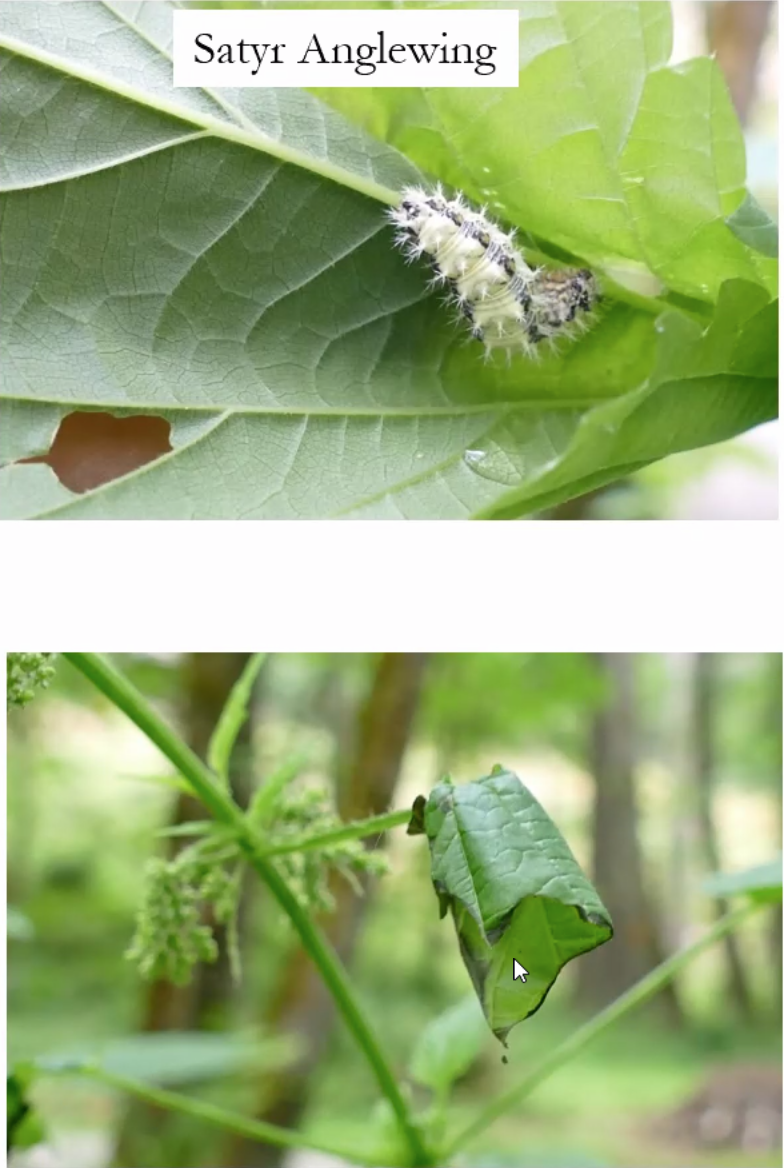
(Folds the nettle leaf into a characteristic shape then eats from the tip up, turning the leaf into a little box.)
Planting diverse species results in diverse wildlife. Planting hedgerows of snowberry, june plum, nootka rose or flowering currant provide food and shelter for local bird populations. Hummingbirds are particularly attracted to mock oranges, red columbine, and black twine berry, making great plants to include in your garden. Successive blooms provide continual floral resources for our local fauna. We can help out our local native species by maintaining existing natural areas and not disturbing their homes.
Meadow Makers Program
Satinflower Nurseries host a program called 'Meadowmakers': a 7 month program that guides members through the process of turning yards and other turfgrass spaces into thriving native meadows. This is an excellent program for anyone interested in learning about their local habitat, and wanting to make a difference. You will learn from expert instructors in bee identification, plant identification and plant propagation techniques. The program runs from April 4 - October 17. Registration is currently open!
Other Resources, Education and Ways to Get Involved with Restoration
● Take a stroll through The HCP Gardens and the HCP Ethnobotany Trail to gain inspiration and educate yourself of just some of the local natural biodiversity. Take note of the signs created by local artist Sarah Jim for an opportunity to learn the SENĆOŦEN names for some of the important plants to the W̱SÁNEĆ people.
● Visit Satinflower Nurseries website to find wonderful resources, opportunities for consults on lawn to meadow conversions, lists of plants for sale and their specification and access to their Meadow Makers Workshop!
● Check out the Island Pollinator Initiative for webinars and more in depth information on the important role pollinators play and what we can do to aid in their survival.
● Donate to local environmental organizations committed to healing the land and restoring lost habitat such as the PEPÁḴEṈ HÁUTW̱ Foundation or Wilderness Committee.
● Volunteer with local invasive clean ups with Haliburton Farms, The Gardens at HCP or University of Victoria.
All photo credit to Kristen Miskelly.
We at HCP gratefully acknowledge that we occupy unceded territory of the W̱SÁNEĆ and Lək̓ʷəŋən peoples. We recognize these lands and ecosystems are not our own. We recognize our role in the continuing process of dispossession, colonialism, and reconciliation. We recognize the need to do better. We humbly welcome all to join in this learning journey.
